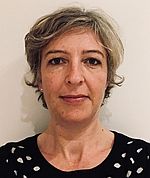|
|
Presenters academic/technical posters
Inspiring poster presentations, banners and other sources of knowlegde inform you about the outcomes of (ongoing) research and development in the field of in-can and tank-mix adjuvant innovations. The presenters (in alphabetic order) and a short intro to their presentations are listed below.
Click here for the plenary presenters.
Participants
 |
Bülbül, Ahmet
MSc student at the University of Gothenburg, Gothenburg, Sweden
Adjuvants for foliar nutrition
Foliar nutrition offers more rapid uptake of nutrients and results in a faster correction of deficiencies than would be observed by soil nutrition. The aim of this project is to investigate the effect of adjuvants on foliar nutrition for chelated and non-chelated (micro)nutrients such as: Zn, Ca, Fe, Cu, Mg, Mn, Mo.
|
 |
Le Bert, Laetitia
Technical Development Account Manager, Stepan Europe, Voreppe (Grenoble), France
Structured surfactant liquids technology: novel suspensive system by surfactant self-assembly, allowing for built-in adjuvancy to agrochemical formulations
Stepan Company presents a novel technology consisting of the preparation of vesicles by the self-assembly of surfactants with defined characteristics. The resulting phase shows interesting rheological behaviour such as a very high elasticity and a strong shear thinning. These properties are the attributes of a strong suspensive system, which can be particularly relevant in agrochemical formulations. In this poster, we will see which parameters influence the formation of these self-assembled vesicles and what characterizes them, their rheological properties and examples demonstrating how this technology can be employed to develop formulations not achievable through conventional methods. |
 |
de Ruiter, Dr. Hans
Director & project leader, SURfaPLUS, Wageningen, The Netherlands
The effect of an esterified copolymer of glycerol on the performance of bacterial biopesticides
Greenhouse trials demonstrated that the adjuvant Elasto G5 (esterified copolymer of glycerol) has a positive effect on the performance of XenTari (Bacillus thuringiensis var. Aizawai) and Serenade (Bacillus subtilis strain QST 713), respectively. XenTari was applied against the golden twin-spot moth (Chrysodeixis chalcites) in peppers and Serenade against powdery mildew in cucumbers and potted roses. Further investigations on drop deposits using light microscopy revealed that the adjuvant enhanced the contact area between the biopesticide and the leaf surface. We suggest that this explains at least a part of the improved performance.
|
 |
Selse, Dennis
Senior research chemist, Akzo Nobel Surface Chemistry, Stenungsund, Sweden
Adsee ST4 – A sustainable solution for seed treatment
Adsee ST4 is a binder for the seed treatment application and it is a copolymer derived from >50% renewable content. This binder is giving increased adherence of pesticide formulations on seeds with decreased dust-off, no phytotoxicity and no decreased flowability of seeds. |
 |
Staiger, Simona
PhD student at the University of Würzburg, Würzburg, Germany
Interaction between plant cuticular compounds, active ingredients, and adjuvants
Adjuvants
like surface active agents and oils interact with the plant cuticle.
Cuticles are composed of components of different physicochemical
properties, including aliphatic and alicyclic wax fractions. Our focus
is on the interactions of active ingredients and adjuvants with these
components, because there have been no studies on the contribution of
these wax fractions to the cuticular permeability of active ingredients. |
|
|





